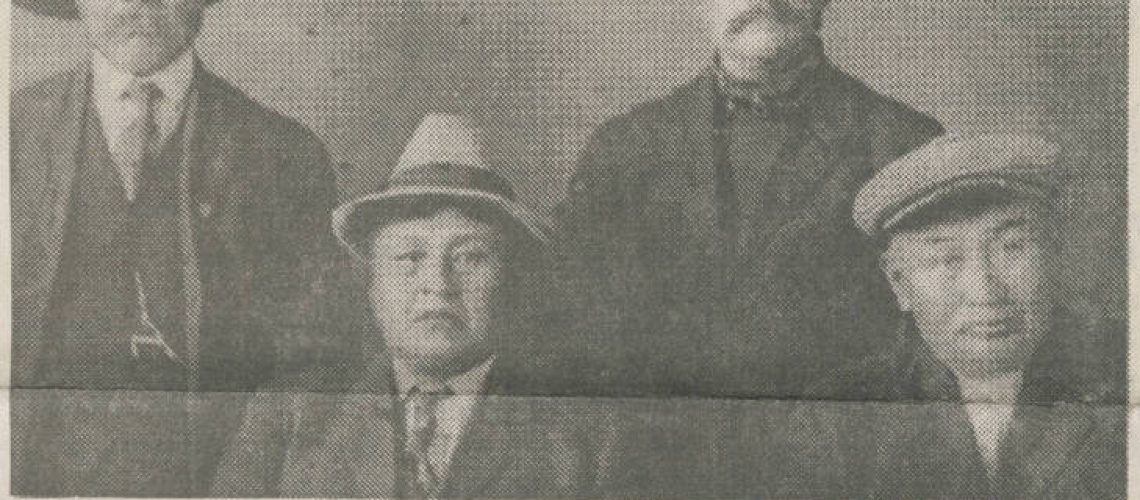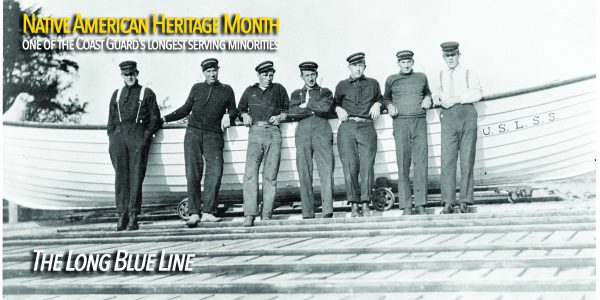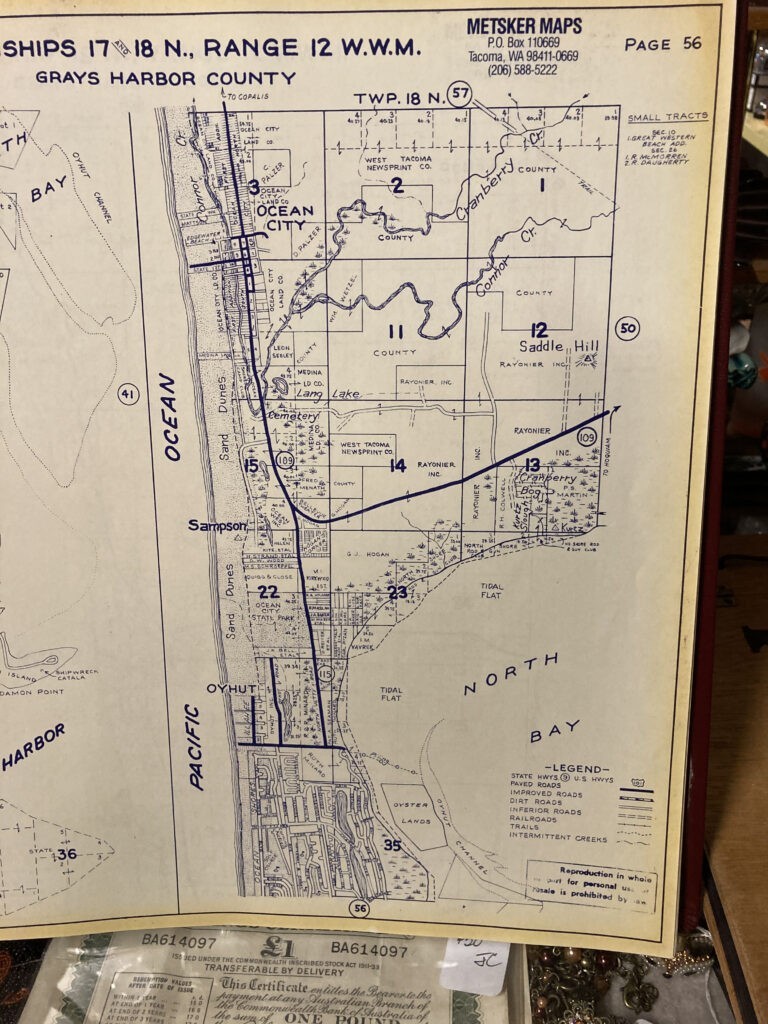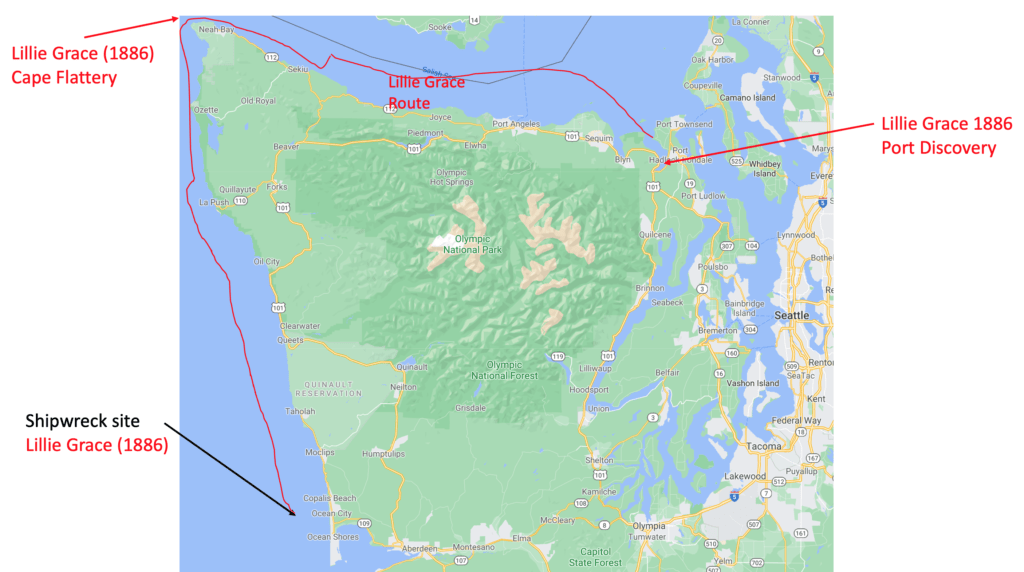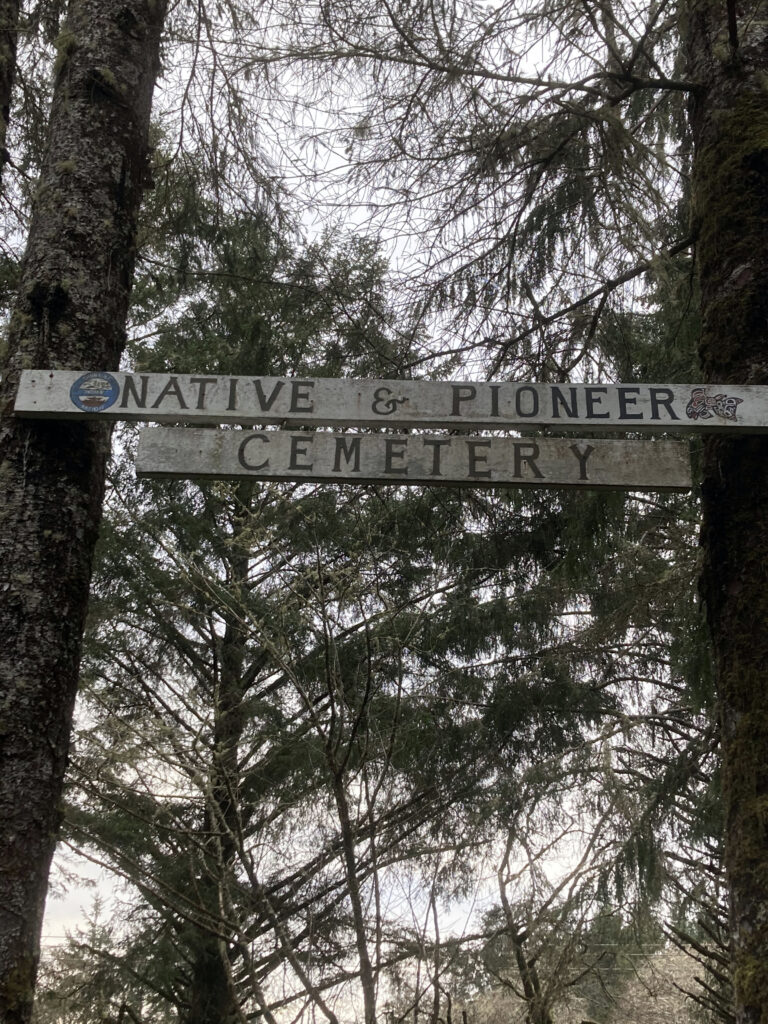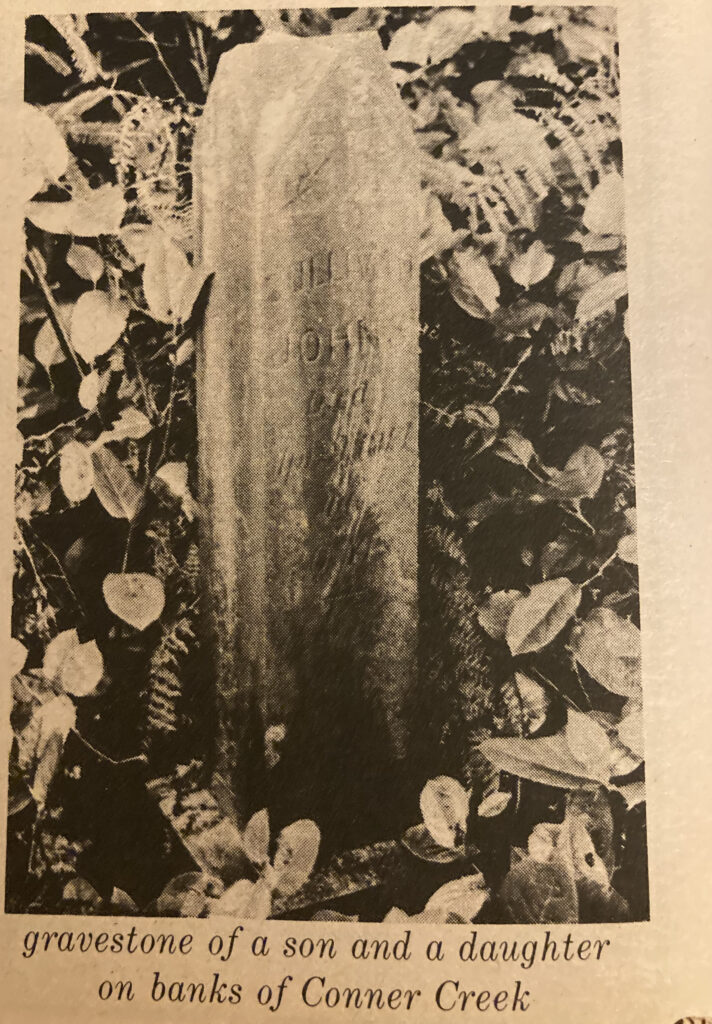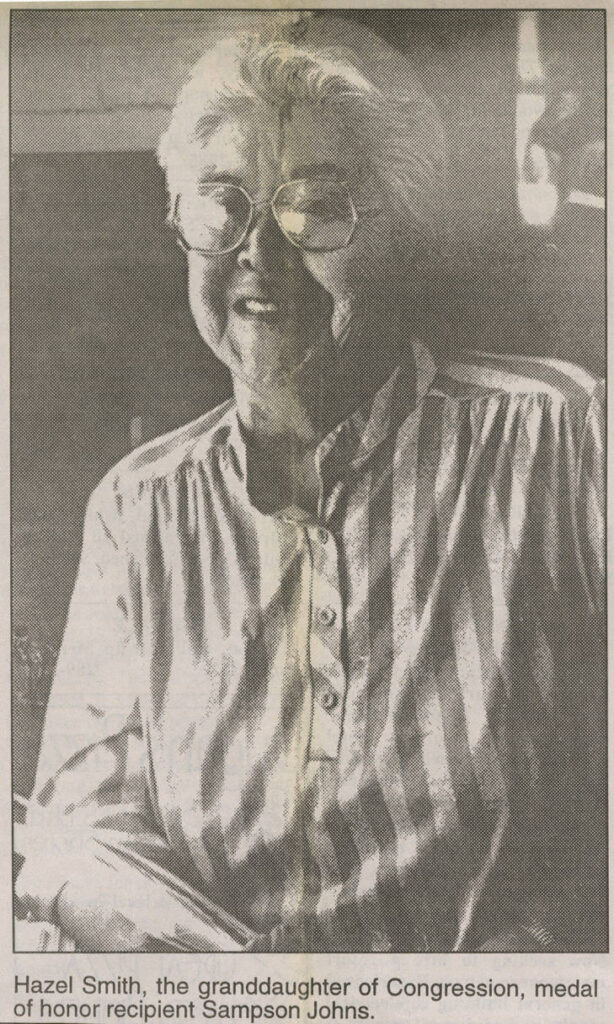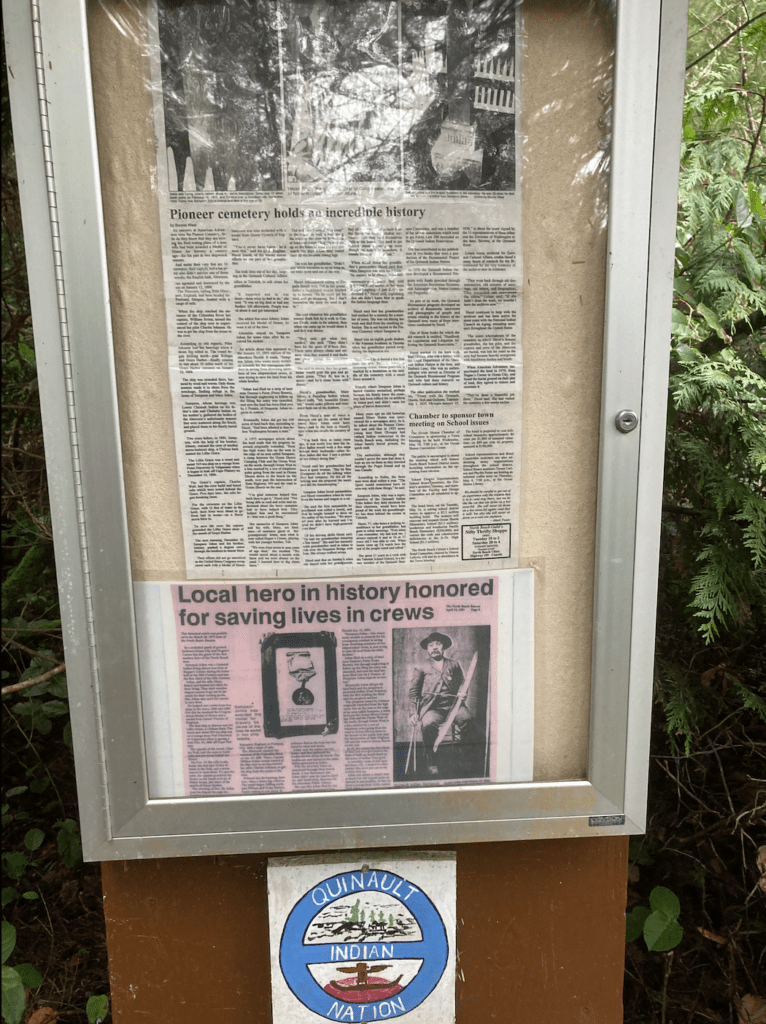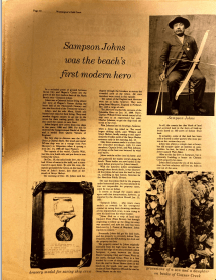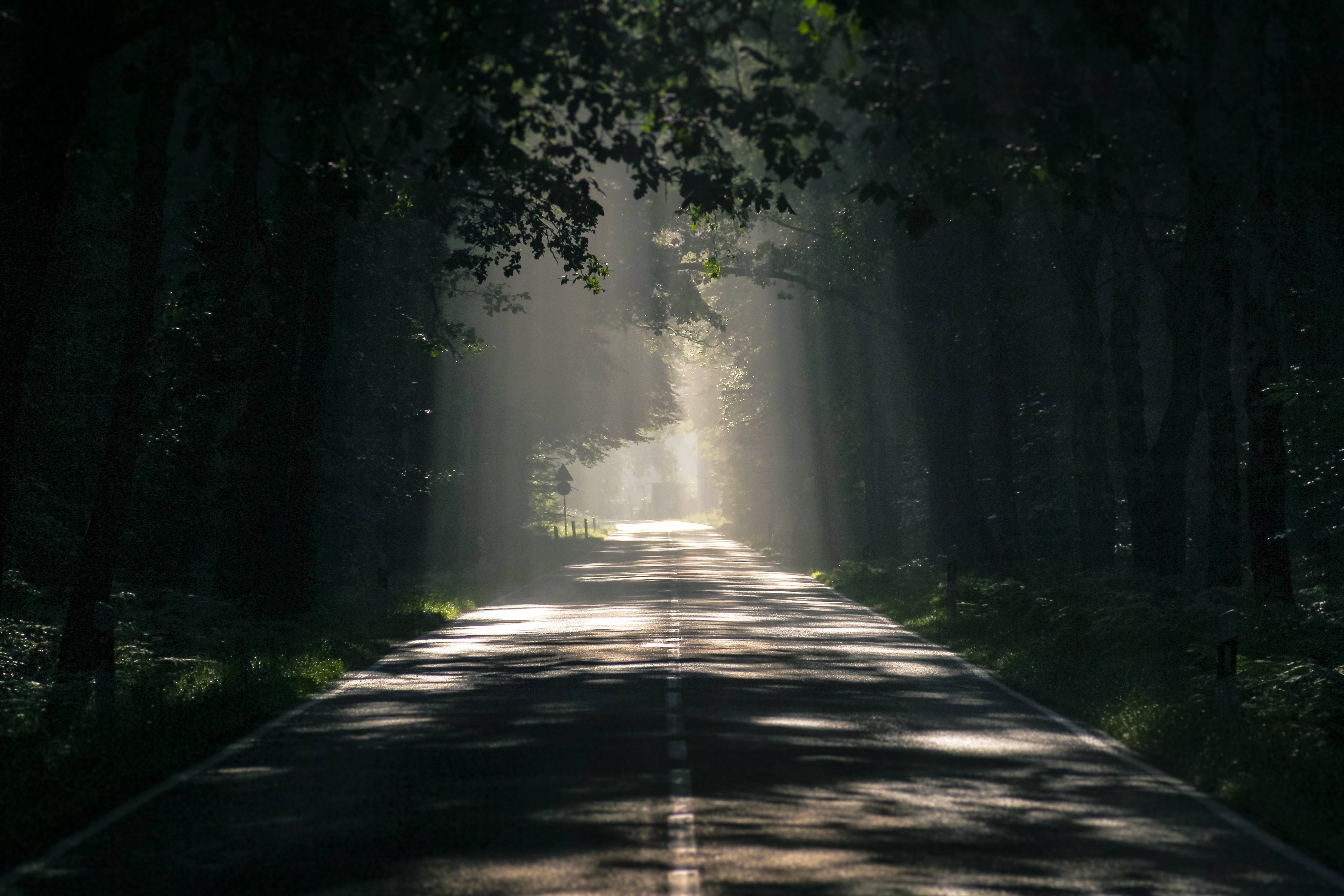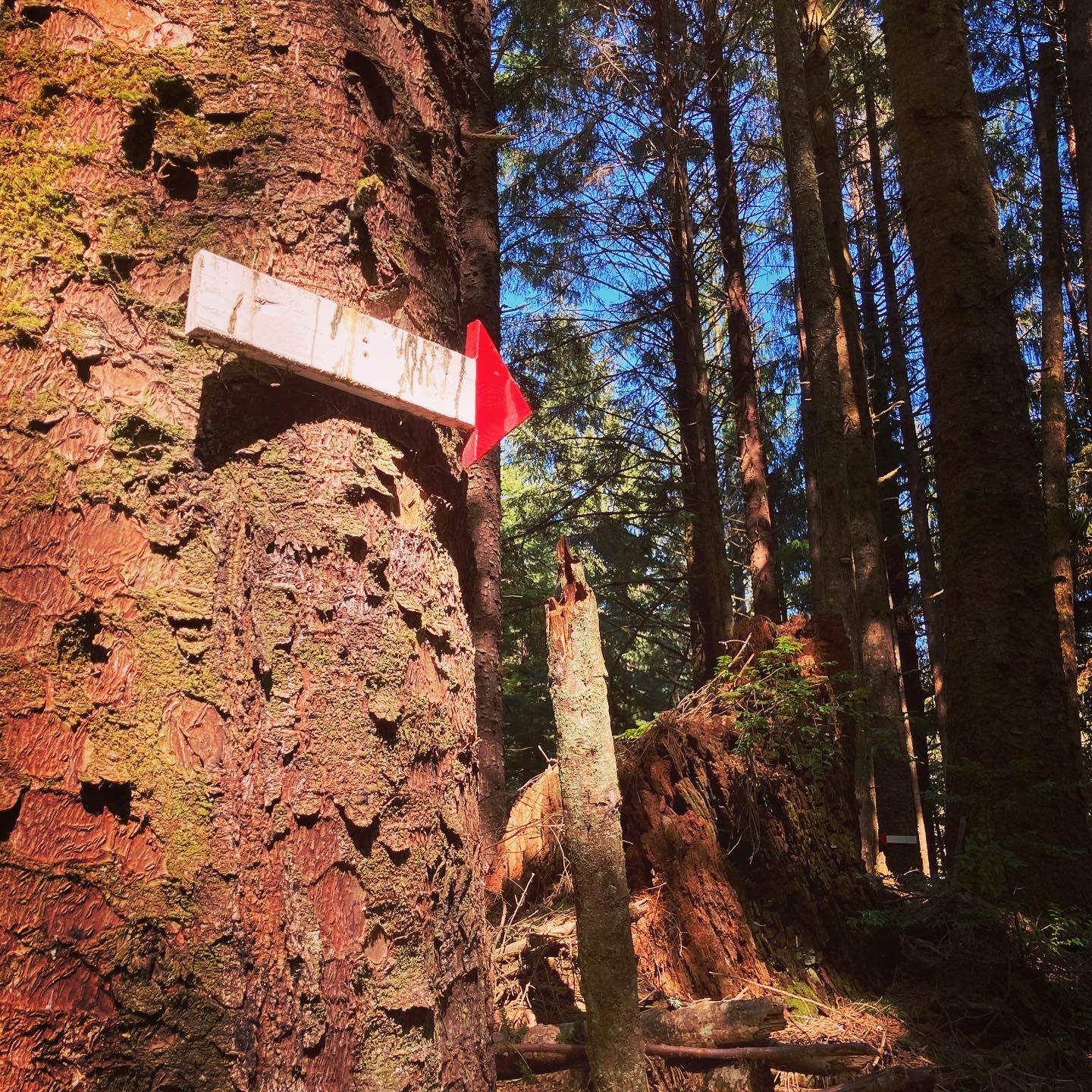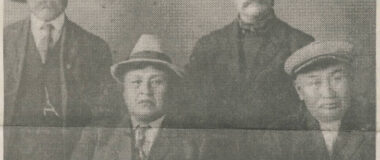Over a century ago, North Beach resident Sampson Johns received a congressional life saving medal for rescuing over a dozen shipwrecked men who were otherwise doomed at sea. Can you imagine being a 19th century sailor; far from home on a sinking ship in unforgiving waters, praying for someone, anyone to jump the breakers and save your life? That’s exactly what Sampson, his brother and a couple friends did regularly. But in 1888 it’s what sealed their fate as bona fide heroes.
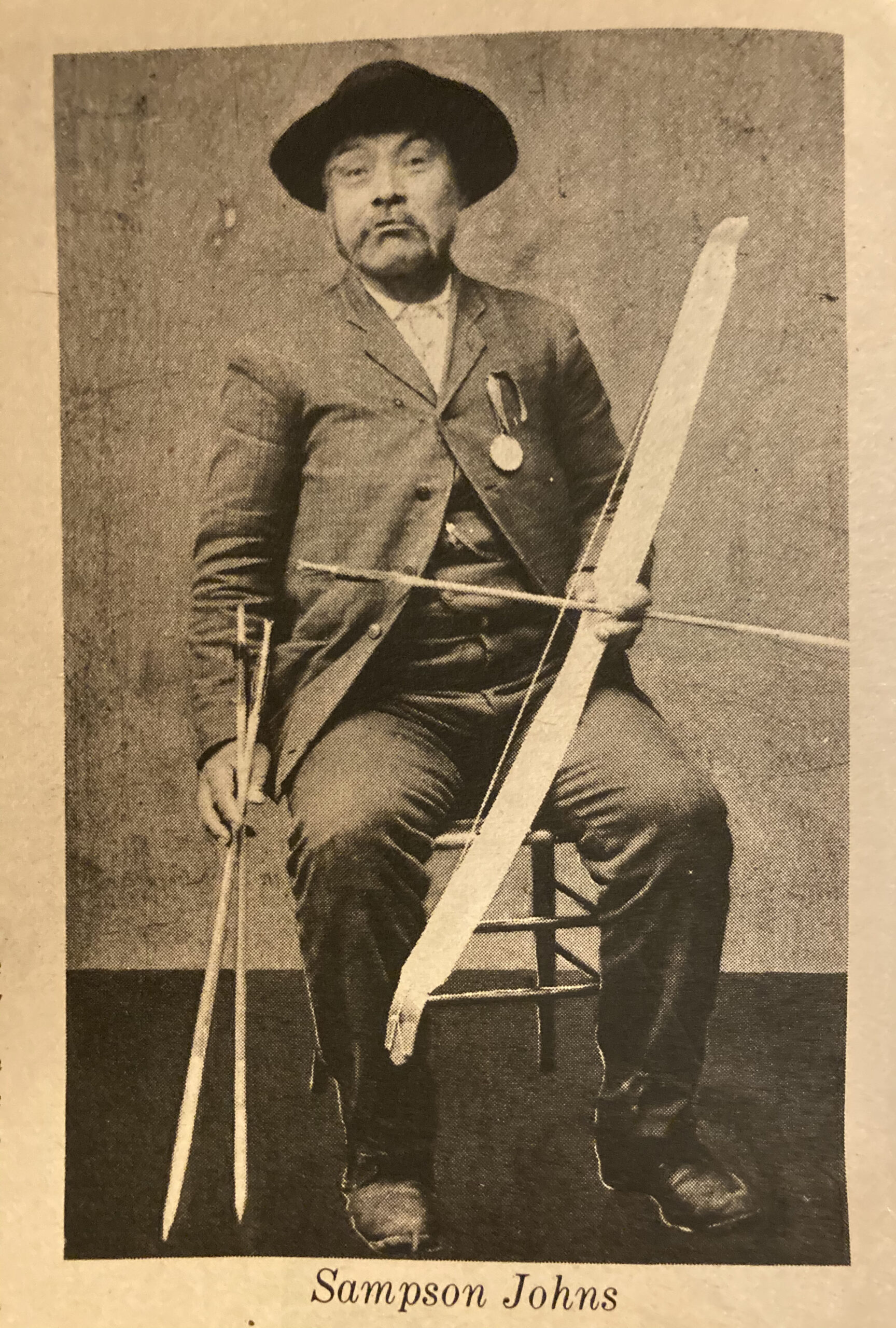
“Shipwrecks happened and he was there — done what he had to do.” Is how Sampson’s granddaughter, Hazel explained it.
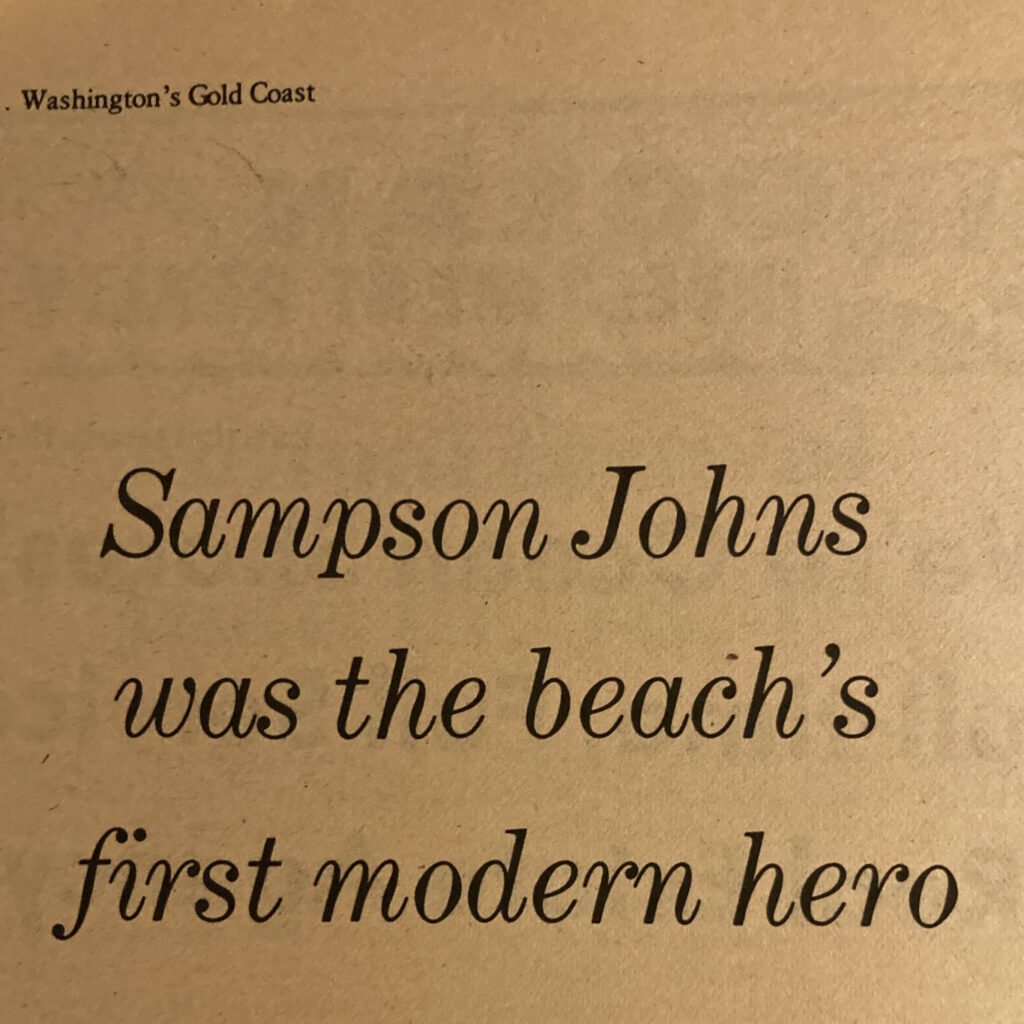
A short refresher on the dangers of seafaring these parts
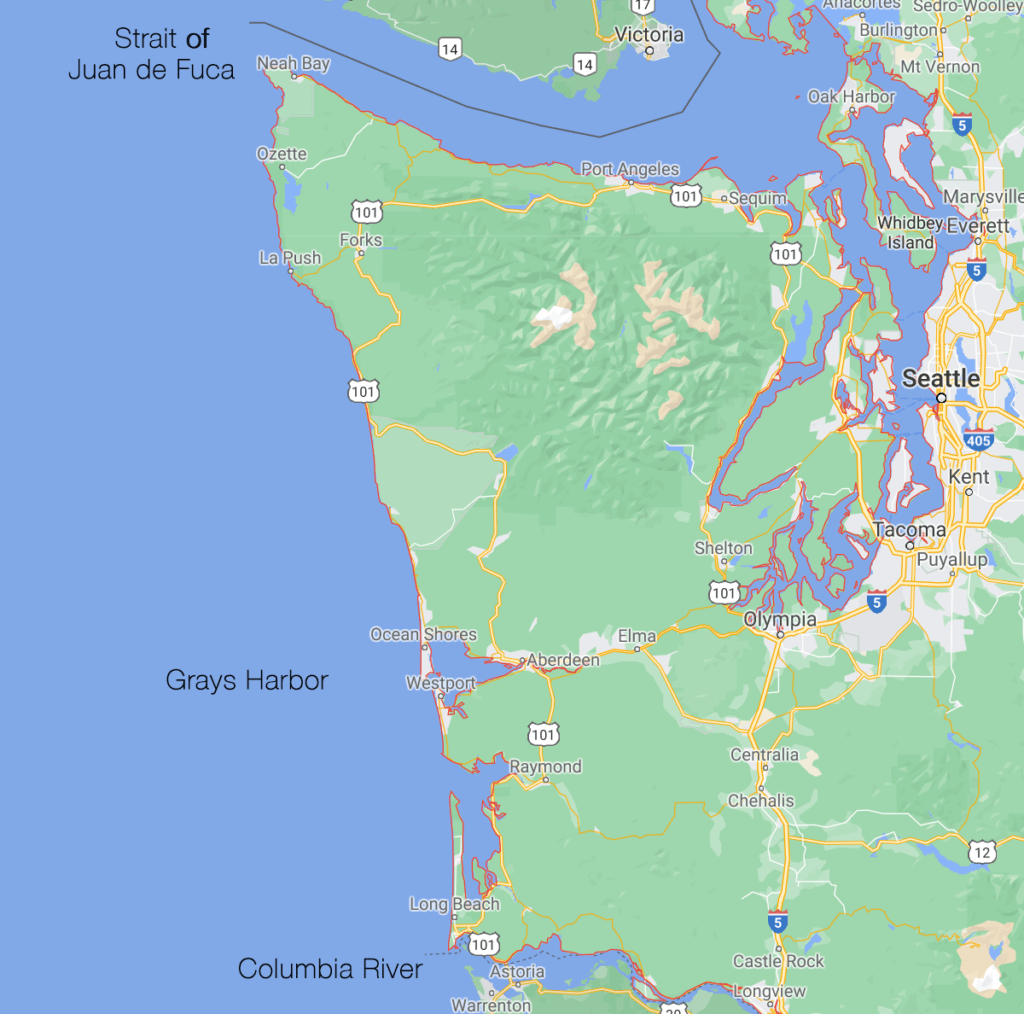
The Washington coast is home to three major danger zones for ship travel; the mouth of the Columbia River, the entrance to Grays Harbor, and Cape Flattery; where the Strait of Juan de Fuca meets the ocean. Rough to navigate, our 160-mile coastline is rugged, stunning, and one of the most dangerous routes for sea travel. That’s why 19th century sailors nicknamed this stretch the “Graveyard of the Pacific.” A deadly combination, it’s the unpredictability of mobile sand bars that flank openings where rivers meet the ocean, fog and violent storms obscuring shoreline, landmarks, safety buoys, beacons, and lighthouses, and the lack of technology and tools we have today that wreaked havoc for ships in the 1800s.
Tribes and coastal life saving stations
While this story pertains to local life saving hero Sampson Johns, it feels important to mention that tribe members have served the US Coast Guard as “surfmen” (those who saved lives at sea) for over 200 years. At Neah Bay before statehood was even recognized, an entirely Native American crew of surfmen manned the 1877 Life Saving Station and became the first Native American unit of it’s kind in federal service. Later, in 1882 when the Shoalwater Bay station was erected near Washaway Beach, it also employed the services of tribal surfmen, most notably Lighthouse George who along with Sampson Johns were celebrated locally, in print. All totaled there were 12 life saving stations built along the west coast.
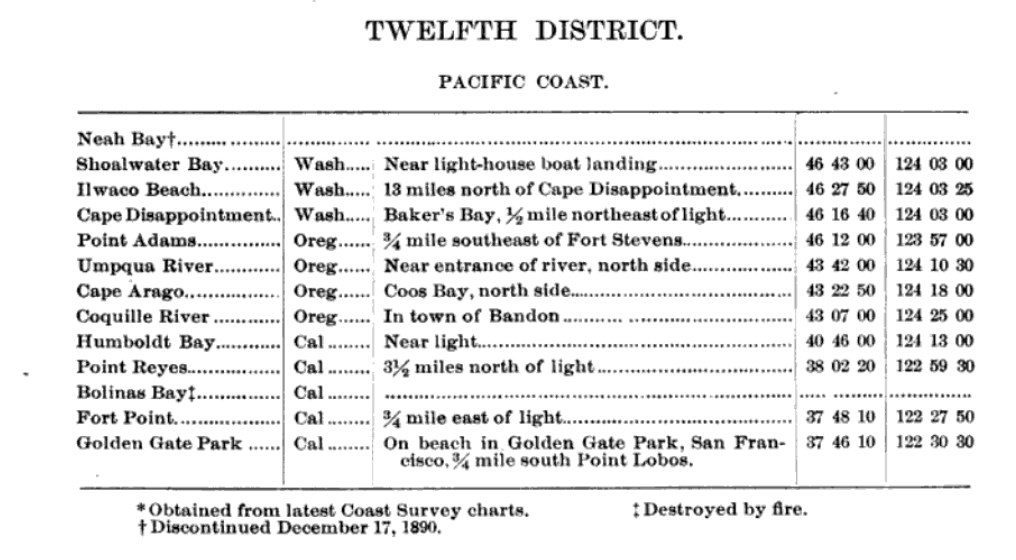
Sampson, Wa - the place you prolly never heard of
By the mid 1800s, Sampson Johns and his wife Mary were raising kids and homesteading a 160-acre parcel that spans portions of what’s now Hogans Corner and the Quinault Lake Resort and Casino. The Johns family homestead was called “Sampson” and we recently found it on a vintage Metsker Map of Grays Harbor. Their property included the high tide line and provided a rest area for canoes crossing Grays Harbor en-route to the Columbia River.
Mary Johns worked at local clam canneries (and there were a number of them) while Sampson earned his pay in other typical early North Beach ways; spearing sea otters for food and pelts, clamming, fishing, foraging, hunting, and trading goods and services. He also earned a tidy little sum in 1888 when Britain recognized him as a hero.
Lifesavers are us
The same skills that helped sustain the Johns homestead were put to use by Sampson and brother Johnny to save lives at sea. The dynamic duo would spot ships in distress and paddle out, through the breakers, to bring doomed sailors safely ashore. A particularly dangerous feat in winter, it was something they did often enough to gain notoriety. Which is exactly how the brothers earned Life Saving Medals from the US Congress and money from the Queen of England.
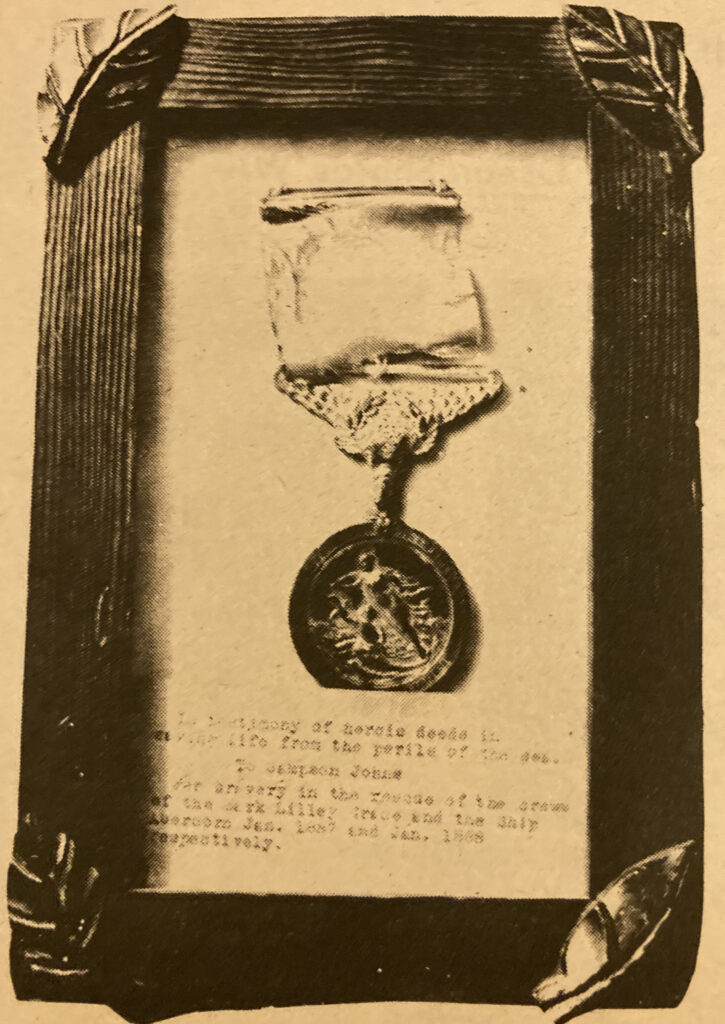
Two Years. Two Ships lost
If you’ve ever been to Cape Flattery and peered over the northwesternmost edge of the continental United States, you know how horrifying it must have been to be there on a sinking ship. Now add driving wind and rain in December and well, that’s what happened to the Chilean bark, Lillie Grace on December 14, 1886. Almost exactly two years later, on January 10, 1888, a much worse fate cursed English bark Abercorn as it headed from Mayport, England to Portland with 2,500 tons of steel rail aboard.
1866 - Chilean Bark: Lillie Grace
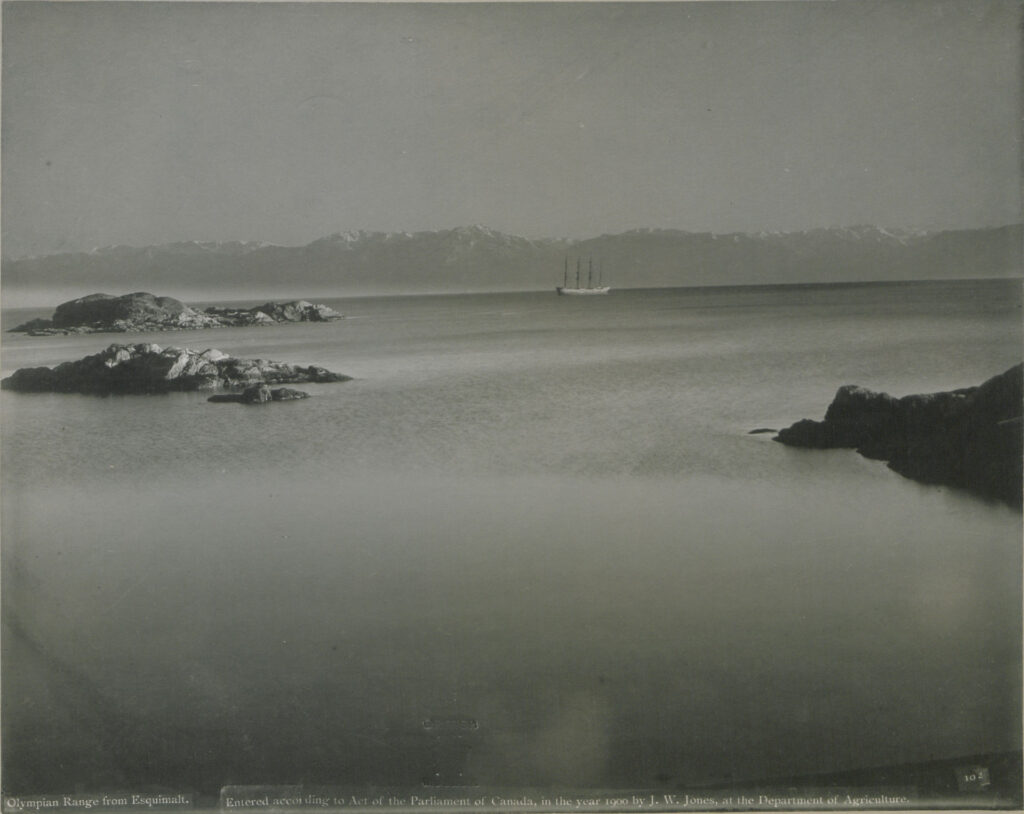
Voyaging west through the Strait of Juan de Fuca en-route from Puget Sound to her home port in Valparaiso, Chile the 545-ton Lillie Grace sprung a leak near Cape Flattery. Not too severe to begin with, Captain Charles Wall had the crew build and then board rafts that he towed behind the wounded ship in hopes of survival until they reached port. Like most Band-Aids, it worked fine until it didn’t. Day five they were caught in gale-force winds, the ship’s hull took on 12-feet of water, and the life rafts (with crew) broke free. To save them, Captain Wall grounded the ship near Sampson Johns’ homestead and in the morning the Johns brothers saw the plight, launched their canoes, and spared the lives of all 14 crew members. Of course the sailors were happy and for the Johns brothers, it was just another day-in-the-life.
1888 - English Bark: Abercorn
Upon reaching the entrance of the Columbia River while enroute to Portland with 2,500 tons of steel rail aboard, Captain William Irvine turned control of the Abercorn to Charles Johnson, an experienced bar pilot.
Bar pilots specialized in navigating treacherous underwater landscapes where the river meets the sea and it was a common practice to hire one for navigation in 1888. However, as you may imagine, fog is enemy-number-one to even the most experienced bar pilot, which is exactly what happened early that January morning.
With 22 souls aboard, a dense fog rolled in and bar pilot Johnson lost his bearings.
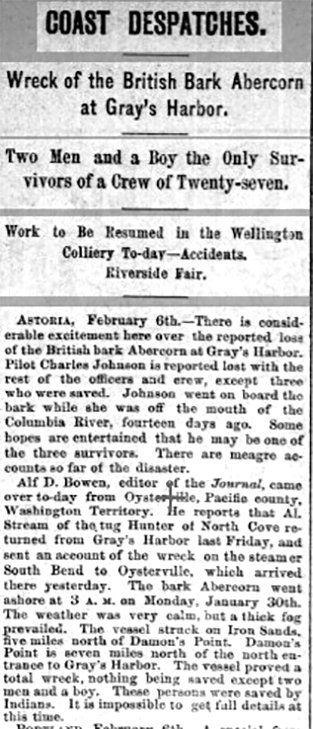
By a survivor’s firsthand account, the vessel first drifted north past Willapa Bay and then past the mouth of Grays Harbor before coming to rest near Sampson Johns’ homestead. While the majority of crew and both captains perished, in Sampson and Johnny’s “did-what-we-had-to-do” fashion, they saved the surviving three sailors who were still clinging to the ship. Later that year as published in the Oregonian, the Johns brothers and three others received $20 – $35 each (roughly $900 bucks today) as a thank-you from Britain, Abercorn’s country of origin.
Native and Pioneer Graveyard
After being awarded the medal, Sampson Johns lived as a decorated hero for three more decades before passing (sometime between 1929 – 1933). He’s buried in the Native and Pioneer Cemetery that resides inside the Ocean Breeze RV Resort off WA-109. I’ve driven past a million times — completely clueless to its existence until I learned about Sampson and we went on a mission to find his grave.
Based on archaic directions found online, it took a bit of searching but finally there on the bank of Conner Creek we found the final resting place of family members, a few pioneers, and (according to lore) 14 of the 22 lost Abercorn seamen who washed ashore that fateful day.
While Mary is reportedly buried elsewhere, Sampson is believed to rest there with several of their children. His grave, as the story goes, is unmarked to prevent grave robbing. The cemetery is tended and you’ll be greeted by an information kiosk displaying a 1995 article interviewing his granddaughter, Hazel.
Hats off to hands-on history along the Hidden Coast Scenic Byway! To North Beach history-maker, Sampson Johns, RIP!
PS. There's More...
The original article that inspired this blog is available below. If you enjoyed it, consider signing up for our newsletter to receive monthly-ish news, including area updates as Pacific Beach Main Street continues to revive, the most recent blogs about fun adventures we’re having while running a shop at the beach, and other whatnots we think up on the fly!

